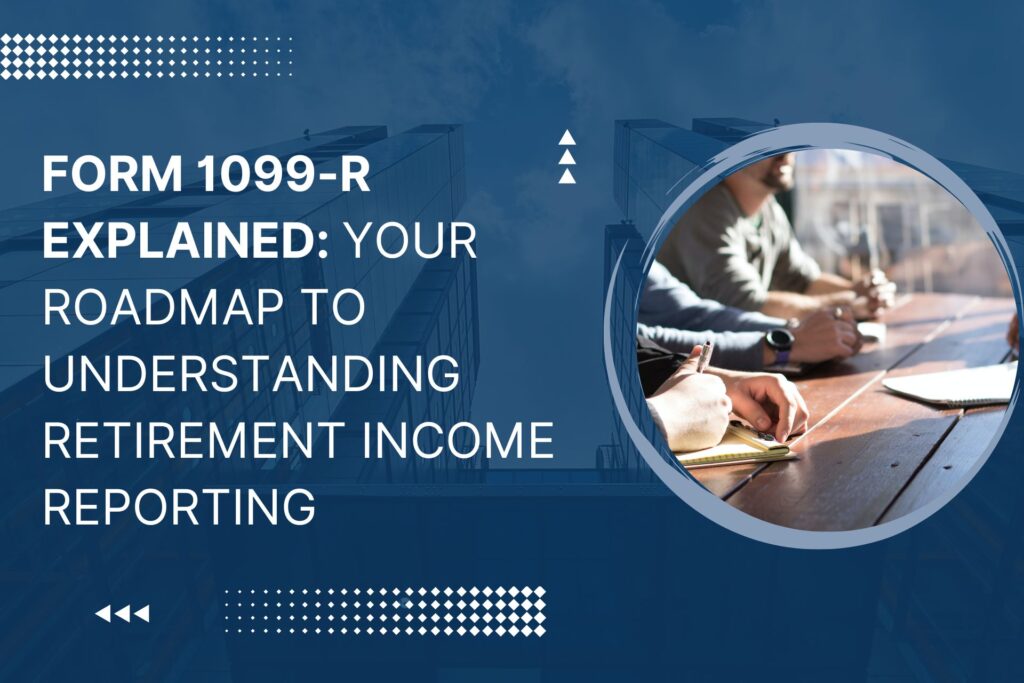Retirement planning involves navigating through various financial documents, including the Form 1099-R. Understanding the intricacies of Form 1099-R is crucial for retirees and those preparing for retirement. In this comprehensive guide, we delve into the details of Form 1099-R, providing you with a roadmap to grasp retirement income reporting.
What is Form 1099-R?
Form 1099-R is a document issued by financial institutions to report distributions from pensions, annuities, retirement plans, IRAs, and insurance contracts. It serves as a record of taxable distributions and rollovers from retirement accounts. Understanding the information presented on Form 1099-R is essential for accurate tax reporting.
Key Components of Form 1099-R
Distribution Codes
Form 1099-R includes distribution codes that indicate the nature of the distribution. These codes help taxpayers and the IRS identify whether the distribution is subject to taxation and any potential penalties or exceptions.
Gross Distribution
The gross distribution represents the total amount withdrawn from the retirement account during the tax year. It includes both taxable and non-taxable distributions.
Taxable Amount
The taxable amount reflects the portion of the distribution subject to income tax. It may include earnings, contributions, and other taxable amounts withdrawn from the retirement account.
Withholding
Form 1099-R also reports any federal income tax withheld from the distribution. Taxpayers should review the withholding amount to ensure proper tax reporting and withholding compliance.
Rollovers and Transfers
Rollovers and transfers from one retirement account to another are also documented on Form 1099-R. Taxpayers must accurately report rollover transactions to avoid potential tax consequences.
Understanding Standard Deduction in 2023-2024
The standard deduction is a predetermined amount that taxpayers can subtract from their taxable income to reduce their overall tax liability. For the tax years 2023-2024, the standard deduction amounts are as follows:
- Single filers: $12,950
- Married filing jointly: $25,900
- Married filing separately: $12,950
- Head of household: $19,400
Taxpayers have the option to claim the standard deduction or itemize deductions, whichever results in a lower tax liability. Understanding the standard deduction is essential for effective tax planning and compliance.
Want to Know More about 1099-R?
Click here to Schedule a Free Consultation Today!Reporting Retirement Income on Tax Returns
When reporting retirement income on tax returns, taxpayers must accurately incorporate information from Form 1099-R. Failure to report retirement income correctly may result in tax penalties and interest charges
Filing Requirements
Taxpayers receiving distributions from retirement accounts exceeding $10 must report the income on their tax returns. Form 1099-R provides the necessary information to accurately report retirement income and ensure compliance with tax laws.
Tax Treatment of Retirement Distributions
The tax treatment of retirement distributions depends on various factors, including the type of retirement account, the age of the account owner, and the purpose of the distribution. Taxpayers should consult with a tax professional to determine the tax implications of their retirement income.
Conclusion
Form 1099-R serves as a vital document for reporting retirement income and ensuring compliance with tax laws. Understanding the components of Form 1099-R and the standard deduction for the tax years 2023-2024 is essential for effective tax planning and accurate tax reporting.


